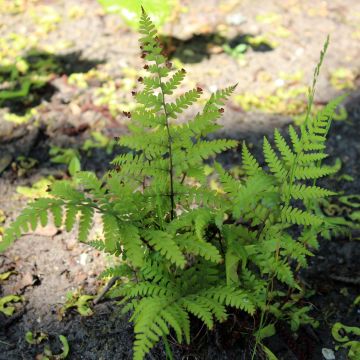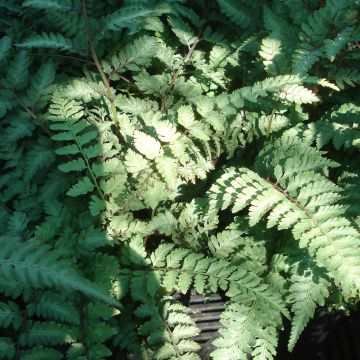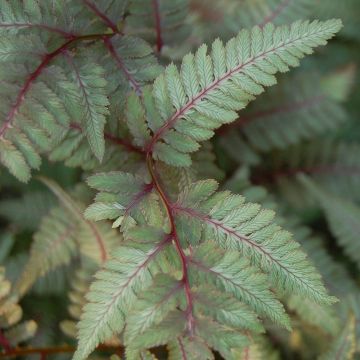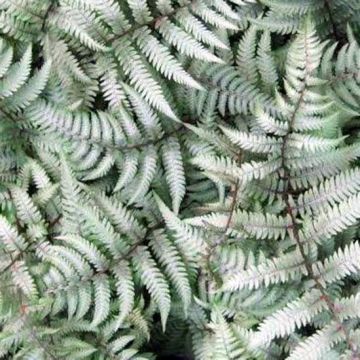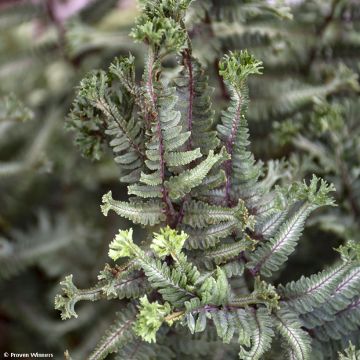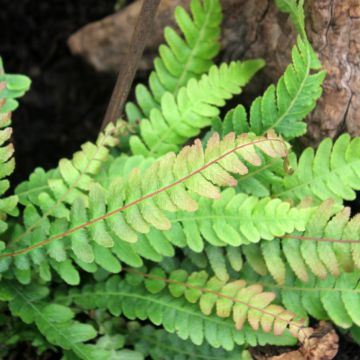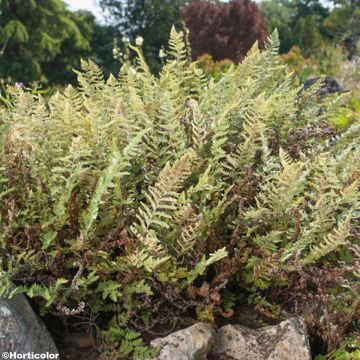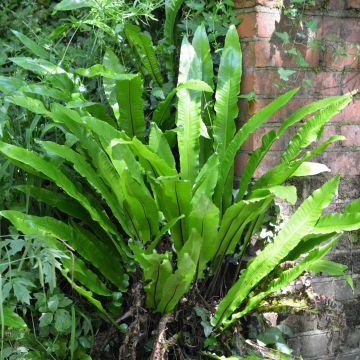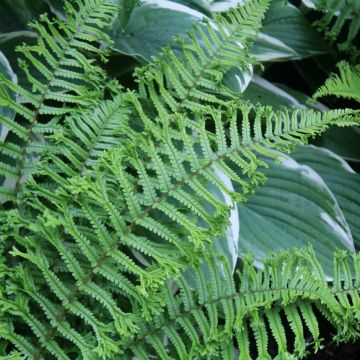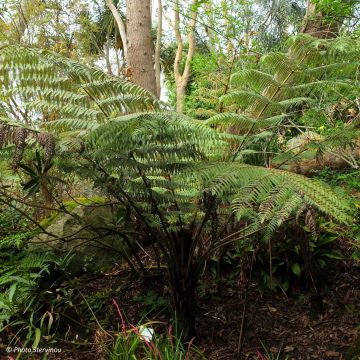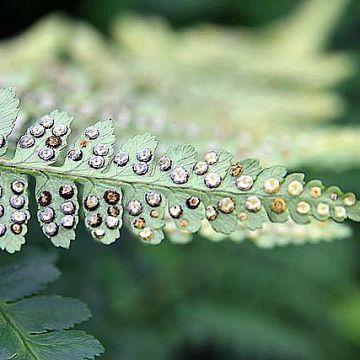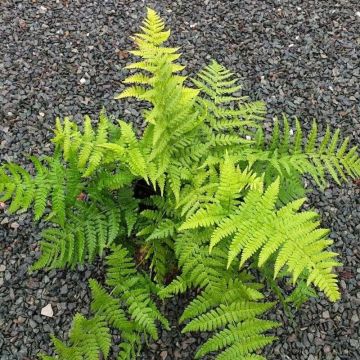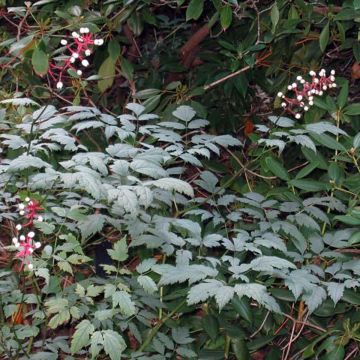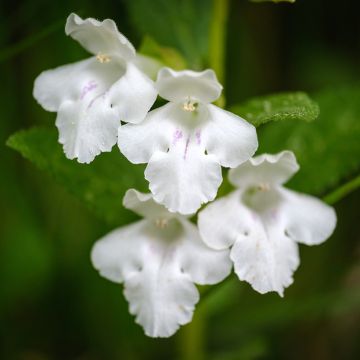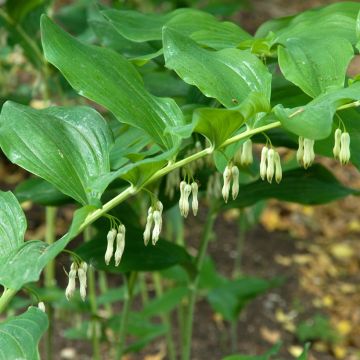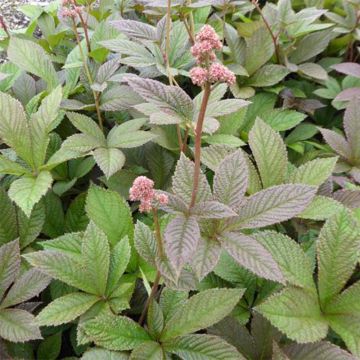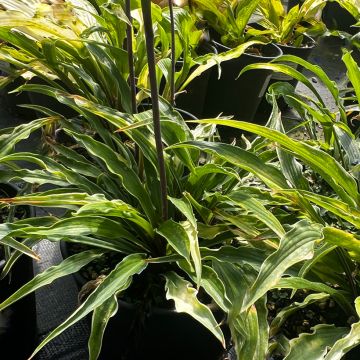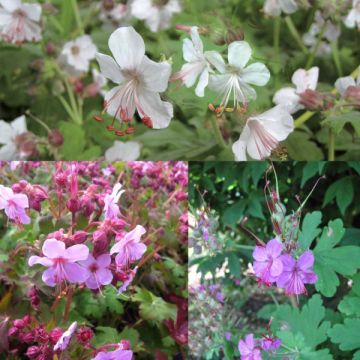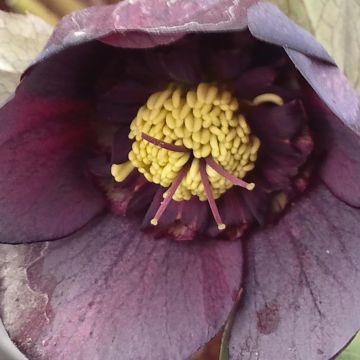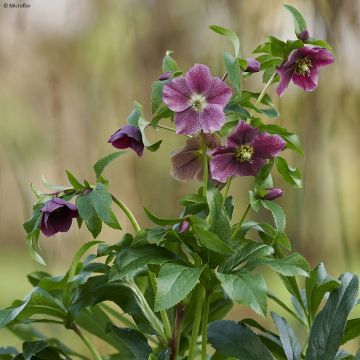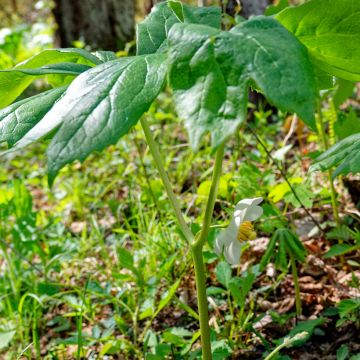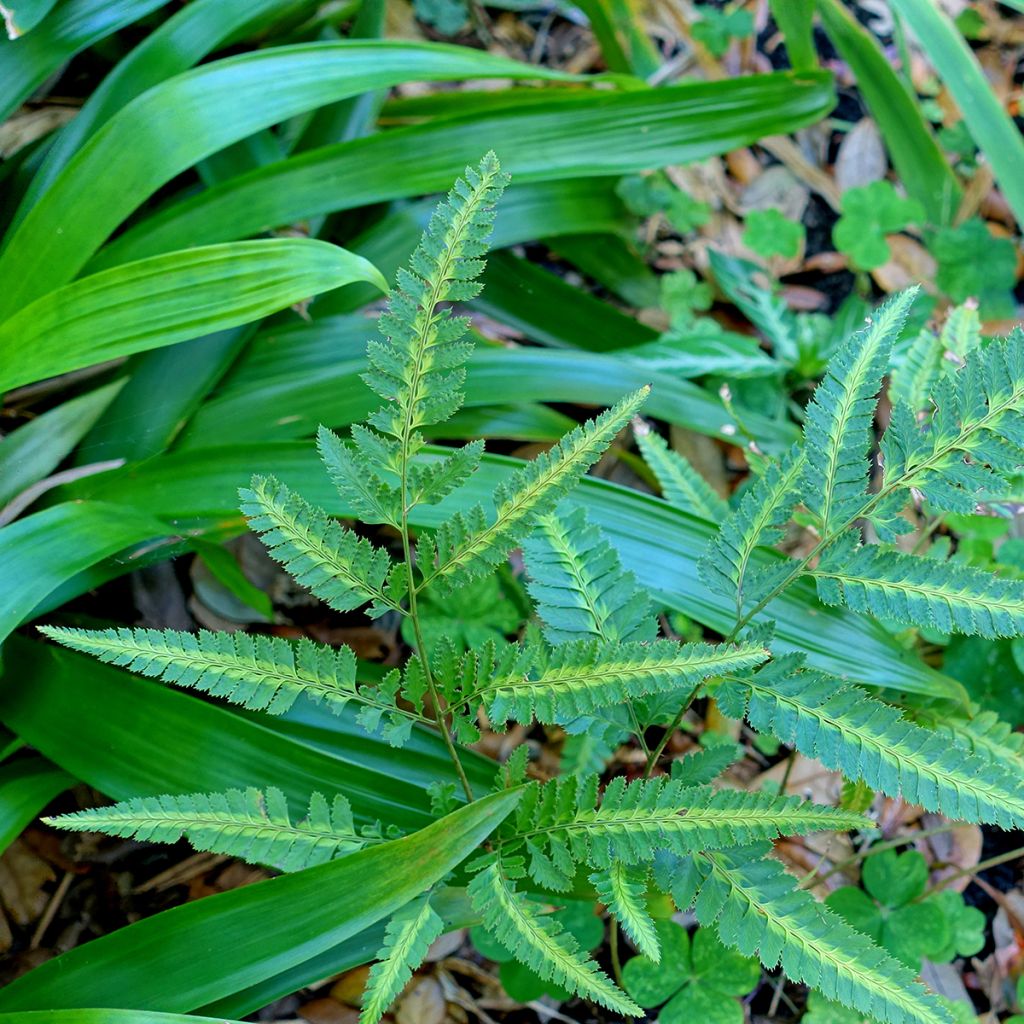

Arachniodes simplicior
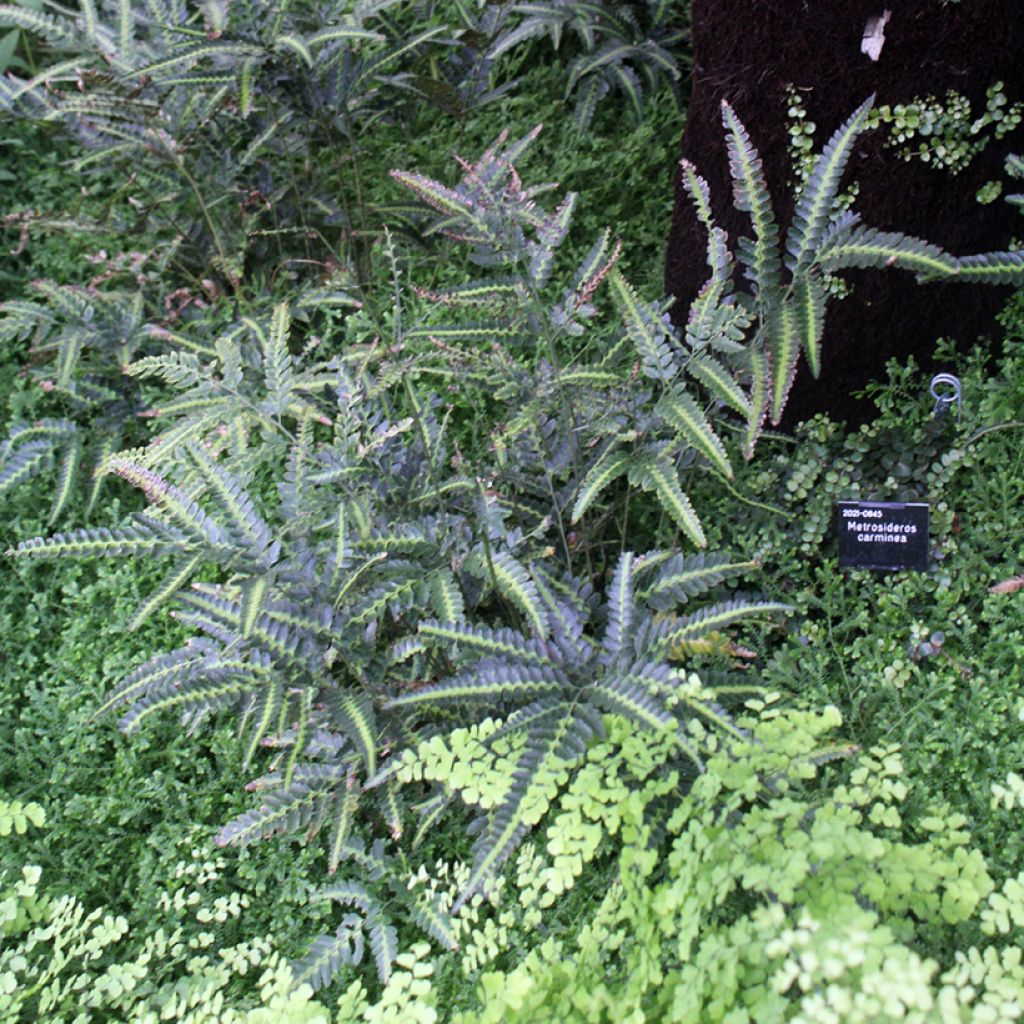

Arachniodes simplicior
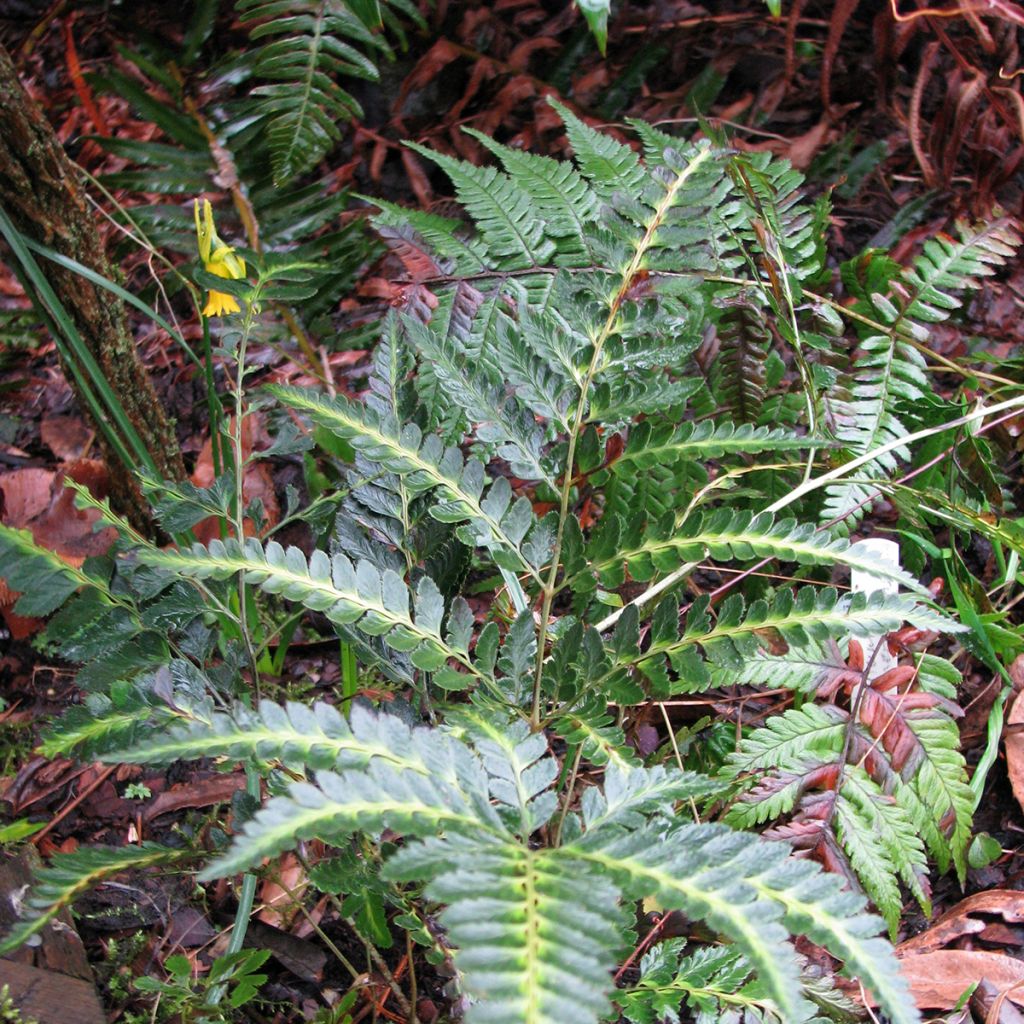

Arachniodes simplicior
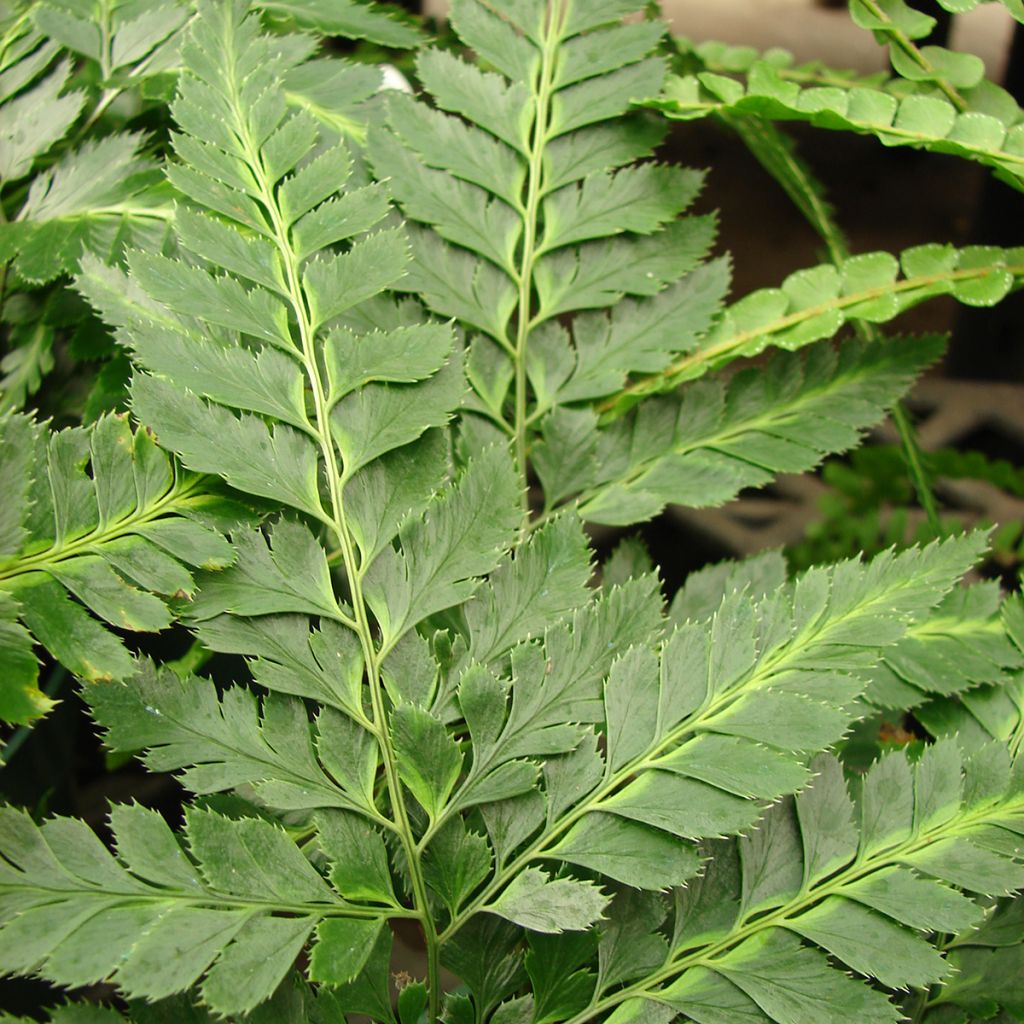

Arachniodes simplicior
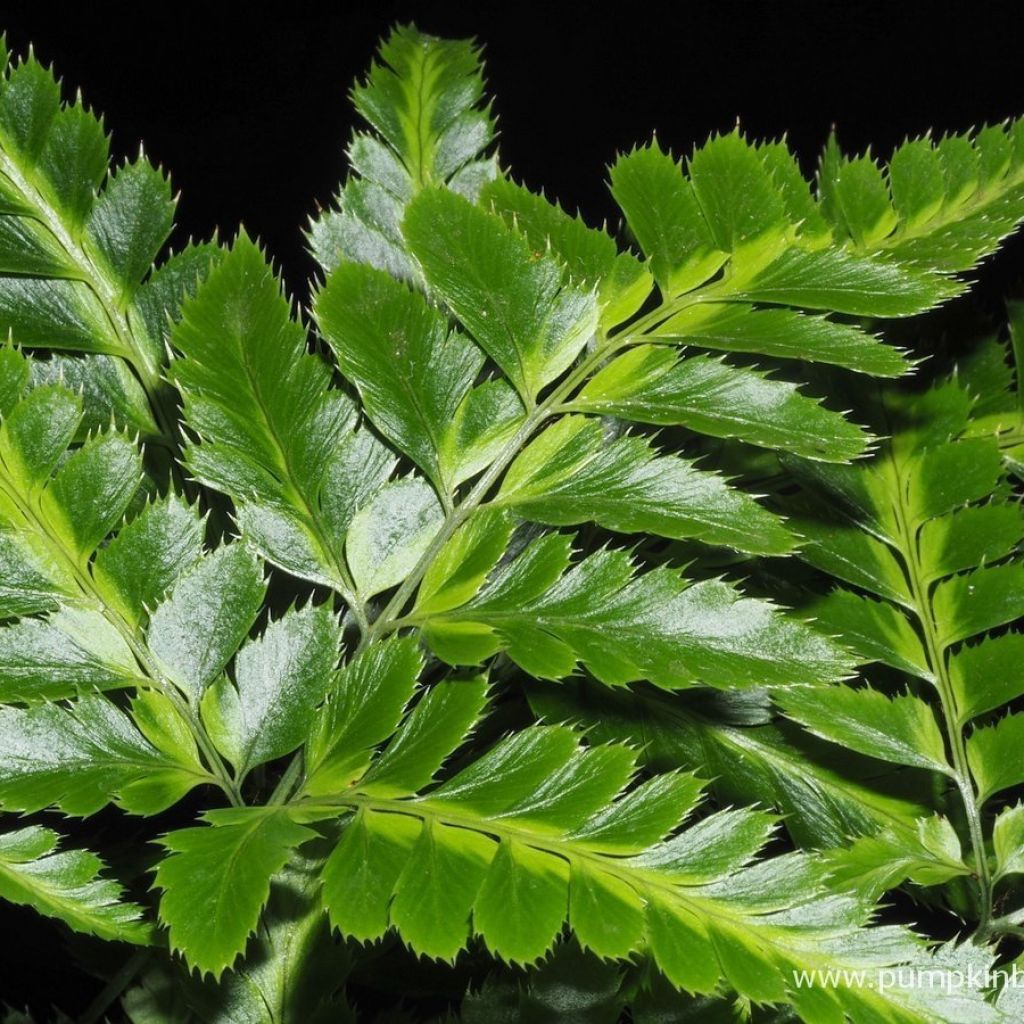

Arachniodes simplicior
Arachniodes simplicior
Arachniodes simplicior
Why not try an alternative variety in stock?
View all →This plant carries a 12 months recovery warranty
More information
We guarantee the quality of our plants for a full growing cycle, and will replace at our expense any plant that fails to recover under normal climatic and planting conditions.
From €5.90 for pickup delivery and €6.90 for home delivery
Express home delivery from €8.90.
Does this plant fit my garden?
Set up your Plantfit profile →
Description
The Arachniodes simplicior is a small Asian fern, extremely decorative with its naturally variegated shiny foliage, evergreen in winter, but also very interesting due to its hardy nature. These qualities make it an excellent choice for ornamenting shaded areas in the garden, as well as for decorating an interior, a conservatory, or a balcony. Its long fronds, divided into shiny pinnaes, display a well-contrasted central stripe ranging from light green to cream. It thrives in partial shade, in well-drained soil that is not too dry, slightly acidic to slightly alkaline.
The Arachniodes simplicior, formerly known as Arachniodes aristata 'Variegata', belongs to the Dryopteridaceae family. This fern is a type of plant that grows in dry, mountainous forests in China and Japan. It's often mistakenly sold under the name Rumohra adiantiformis 'Variegata', which is another fern that isn't very hardy. The plant grows slowly and forms a shrub that's about 40 cm (16in) in height and 60 cm (24in) in width. It produces only a few new fronds each spring and stays green throughout the winter. The new fronds are bright green, while the old ones are dark green with blueish reflections and light green to cream stripes in the centre. The fronds are tough, triangular, and very elongated. The base of each pinnule, which ranges from lime green to cream, gives the fronds a beautiful variegated effect.
With great ornamental value, the Arachniodes simplicior is a fern that will beautifully adorn rockeries, flower beds, and pots. It appreciates the ambience of a light woodland, sheltered from the sun in the afternoon, planted in a leafy soil that is neither waterlogged nor too dry. To accompany it, consider, for example, other small ferns (Athyrium, Polypodium, Asplenium), small dwarf hostas, or heucheras. It is also a stunning green plant for the house or conservatory. The plant's cut foliage can last a long time and will enhance any homemade bouquet.
Report an error about the product description
Arachniodes simplicior in pictures
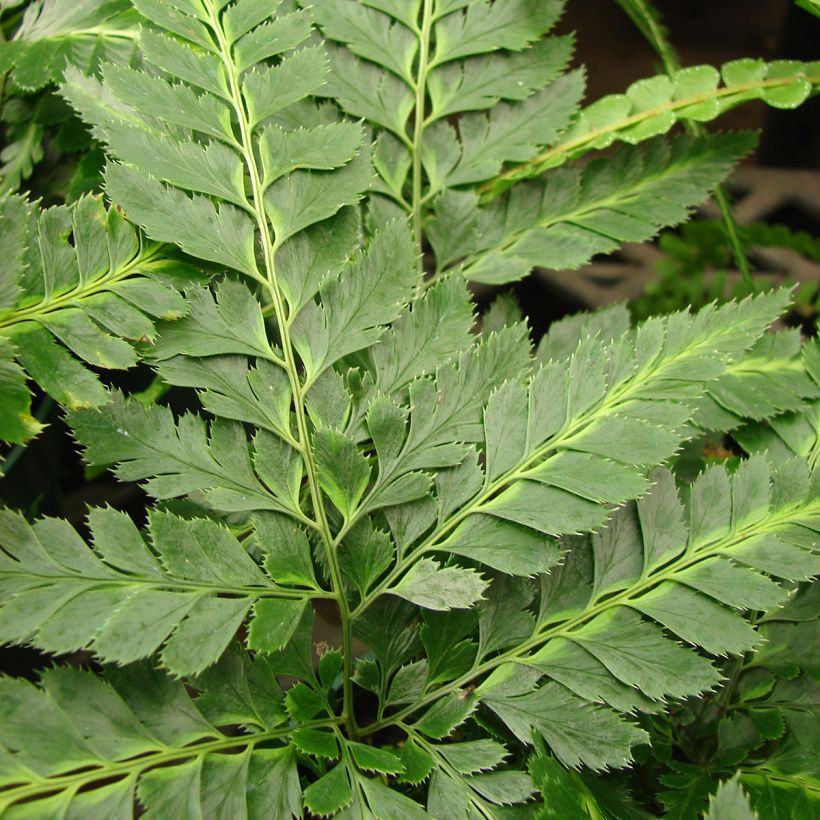

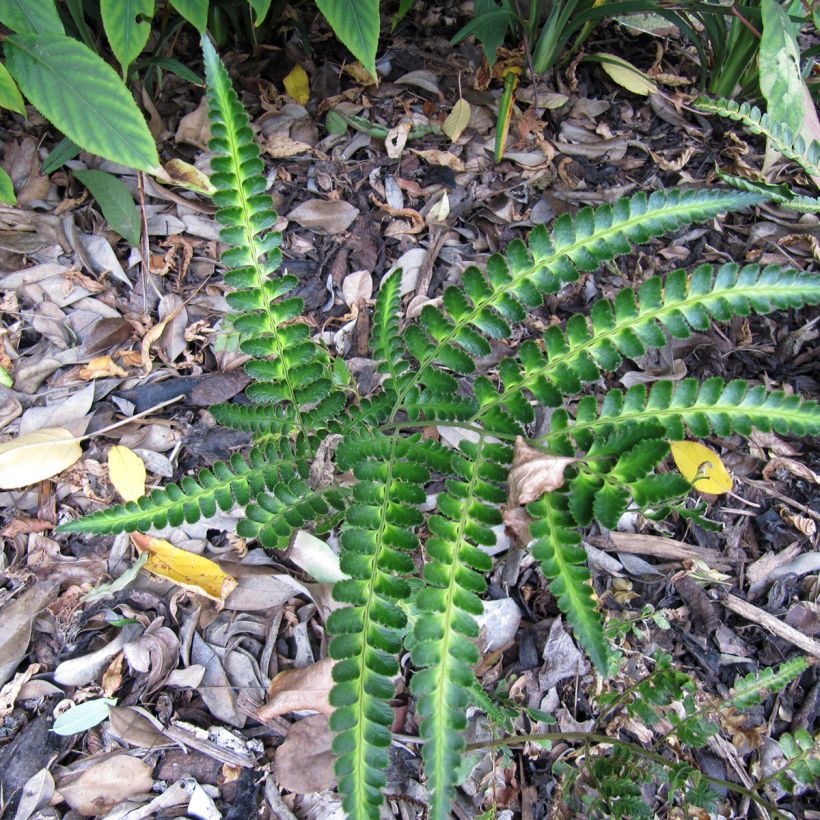

Foliage
Plant habit
Botanical data
Arachniodes
simplicior
Dryopteridaceae
Cultivar or hybrid
Other Ferns A to Z
Planting and care
If you want to grow Arachniodes simplicior, choose a spot with partial sunlight and avoid direct sunlight during the hottest hours of the day in summer. For the soil, use a well-draining mix that includes leaf compost or humus. It should not be overly dry in summer, nor should it have stagnant water or be too arid. The soil should be shallow and slightly acidic or neutral, even if the subsoil is somewhat chalky. Keep the soil moist but not too wet. Each year, add a new layer of humus or leaf compost around the base of the fern and remove old, dry fronds. To divide your fern, cut the rootstocks on the outer edge of the clump in spring. Make sure each division has a good piece of rootstock and several fronds.
Planting period
Intended location
Care
-
, onOrder confirmed
Reply from on Promesse de fleurs
Shade-loving perennials
Haven't found what you were looking for?
Hardiness is the lowest winter temperature a plant can endure without suffering serious damage or even dying. However, hardiness is affected by location (a sheltered area, such as a patio), protection (winter cover) and soil type (hardiness is improved by well-drained soil).

Photo Sharing Terms & Conditions
In order to encourage gardeners to interact and share their experiences, Promesse de fleurs offers various media enabling content to be uploaded onto its Site - in particular via the ‘Photo sharing’ module.
The User agrees to refrain from:
- Posting any content that is illegal, prejudicial, insulting, racist, inciteful to hatred, revisionist, contrary to public decency, that infringes on privacy or on the privacy rights of third parties, in particular the publicity rights of persons and goods, intellectual property rights, or the right to privacy.
- Submitting content on behalf of a third party;
- Impersonate the identity of a third party and/or publish any personal information about a third party;
In general, the User undertakes to refrain from any unethical behaviour.
All Content (in particular text, comments, files, images, photos, videos, creative works, etc.), which may be subject to property or intellectual property rights, image or other private rights, shall remain the property of the User, subject to the limited rights granted by the terms of the licence granted by Promesse de fleurs as stated below. Users are at liberty to publish or not to publish such Content on the Site, notably via the ‘Photo Sharing’ facility, and accept that this Content shall be made public and freely accessible, notably on the Internet.
Users further acknowledge, undertake to have ,and guarantee that they hold all necessary rights and permissions to publish such material on the Site, in particular with regard to the legislation in force pertaining to any privacy, property, intellectual property, image, or contractual rights, or rights of any other nature. By publishing such Content on the Site, Users acknowledge accepting full liability as publishers of the Content within the meaning of the law, and grant Promesse de fleurs, free of charge, an inclusive, worldwide licence for the said Content for the entire duration of its publication, including all reproduction, representation, up/downloading, displaying, performing, transmission, and storage rights.
Users also grant permission for their name to be linked to the Content and accept that this link may not always be made available.
By engaging in posting material, Users consent to their Content becoming automatically accessible on the Internet, in particular on other sites and/or blogs and/or web pages of the Promesse de fleurs site, including in particular social pages and the Promesse de fleurs catalogue.
Users may secure the removal of entrusted content free of charge by issuing a simple request via our contact form.
The flowering period indicated on our website applies to countries and regions located in USDA zone 8 (France, the United Kingdom, Ireland, the Netherlands, etc.)
It will vary according to where you live:
- In zones 9 to 10 (Italy, Spain, Greece, etc.), flowering will occur about 2 to 4 weeks earlier.
- In zones 6 to 7 (Germany, Poland, Slovenia, and lower mountainous regions), flowering will be delayed by 2 to 3 weeks.
- In zone 5 (Central Europe, Scandinavia), blooming will be delayed by 3 to 5 weeks.
In temperate climates, pruning of spring-flowering shrubs (forsythia, spireas, etc.) should be done just after flowering.
Pruning of summer-flowering shrubs (Indian Lilac, Perovskia, etc.) can be done in winter or spring.
In cold regions as well as with frost-sensitive plants, avoid pruning too early when severe frosts may still occur.
The planting period indicated on our website applies to countries and regions located in USDA zone 8 (France, United Kingdom, Ireland, Netherlands).
It will vary according to where you live:
- In Mediterranean zones (Marseille, Madrid, Milan, etc.), autumn and winter are the best planting periods.
- In continental zones (Strasbourg, Munich, Vienna, etc.), delay planting by 2 to 3 weeks in spring and bring it forward by 2 to 4 weeks in autumn.
- In mountainous regions (the Alps, Pyrenees, Carpathians, etc.), it is best to plant in late spring (May-June) or late summer (August-September).
The harvesting period indicated on our website applies to countries and regions in USDA zone 8 (France, England, Ireland, the Netherlands).
In colder areas (Scandinavia, Poland, Austria...) fruit and vegetable harvests are likely to be delayed by 3-4 weeks.
In warmer areas (Italy, Spain, Greece, etc.), harvesting will probably take place earlier, depending on weather conditions.
The sowing periods indicated on our website apply to countries and regions within USDA Zone 8 (France, UK, Ireland, Netherlands).
In colder areas (Scandinavia, Poland, Austria...), delay any outdoor sowing by 3-4 weeks, or sow under glass.
In warmer climes (Italy, Spain, Greece, etc.), bring outdoor sowing forward by a few weeks.

































